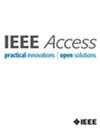SERLogic:用于增强顺序推荐的逻辑集成框架
IF 3.4
3区 计算机科学
Q2 COMPUTER SCIENCE, INFORMATION SYSTEMS
引用次数: 0
摘要
顺序推荐模型用于根据用户的历史交互预测用户下一个top-K的首选项目。然而,这些模型经常在推荐分数接近决策阈值的“模糊区域”中挣扎,导致假阳性和假阴性。为了克服这一限制,我们提出了$\textsf {SERLogic}$,这是一个包含逻辑规则的创新框架,称为$\mathsf {TIE^{+}\!S}$,以提高现有的顺序推荐模型的准确性,而无需训练新的机器学习模型。$ \ mathsf{领带^ {+}\ !s}$表示一类新的图预测规则,其特征为对偶图模式$\mathcal {Q}$和依赖项$X \右列(X, likes, y)$,其中$\mathcal {Q}$呈现双星结构,X扩展了ML顺序推荐模型和1-WL测试作为谓词。使用$\textsf {SERLogic}$,我们展示1)验证问题$\mathsf {TIE^{+}\!s}$是多项式时间($\textsf {PTIME}$),可以有效地验证图是否满足$\mathsf {TIE^{+}\!年代}$;2)迭代学习高质量$\mathsf {TIE^{+}\!年代}$;3)应用发现的$\mathsf {TIE^{+}\!S}$来有效地生成推荐。对真实数据集的实证评估表明,$\textsf {SERLogic}$在Recall@K和NDCG@K方面显著提高了顺序推荐模型的性能,同时也实现了卓越的计算效率。本文章由计算机程序翻译,如有差异,请以英文原文为准。
SERLogic: A Logic-Integrated Framework for Enhancing Sequential Recommendations
Sequential recommendation models are used to predict users’ next top-K preferred items based on their historical interactions. However, these models often struggle in “fuzzy areas” where recommendation scores are near decision thresholds, leading to false positives and false negatives. To overcome this limitation, we propose $\textsf {SERLogic}$ , an innovative framework that incorporates logic rules, termed $\mathsf {TIE^{+}\!s}$ , into existing sequential recommendation models to enhance their accuracy without the need for training a new machine learning model. $\mathsf {TIE^{+}\!s}$ represent a novel class of graph prediction rules characterized by a dual graph pattern $\mathcal {Q}$ and a dependency $X \rightarrow (x, likes, y)$ , where $\mathcal {Q}$ exhibits a dual star structure, and X extends ML sequential recommendation models and 1-WL test as predicates. With $\textsf {SERLogic}$ , we show 1) validation problem for $\mathsf {TIE^{+}\!s}$ is in polynomial time ( $\textsf {PTIME}$ ), enabling efficient verification of whether a graph satisfies a set of $\mathsf {TIE^{+}\!s}$ ; 2) creator-critic algorithm that iteratively learns high-quality $\mathsf {TIE^{+}\!s}$ ; 3) parallel algorithm that applies the discovered $\mathsf {TIE^{+}\!s}$ to generate recommendations efficiently. Empirical evaluation on real-world datasets reveals that $\textsf {SERLogic}$ significantly enhances the performance of sequential recommendation models in terms of Recall@K and NDCG@K, while also achieving superior computational efficiency.
求助全文
通过发布文献求助,成功后即可免费获取论文全文。
去求助
来源期刊

IEEE Access
COMPUTER SCIENCE, INFORMATION SYSTEMSENGIN-ENGINEERING, ELECTRICAL & ELECTRONIC
CiteScore
9.80
自引率
7.70%
发文量
6673
审稿时长
6 weeks
期刊介绍:
IEEE Access® is a multidisciplinary, open access (OA), applications-oriented, all-electronic archival journal that continuously presents the results of original research or development across all of IEEE''s fields of interest.
IEEE Access will publish articles that are of high interest to readers, original, technically correct, and clearly presented. Supported by author publication charges (APC), its hallmarks are a rapid peer review and publication process with open access to all readers. Unlike IEEE''s traditional Transactions or Journals, reviews are "binary", in that reviewers will either Accept or Reject an article in the form it is submitted in order to achieve rapid turnaround. Especially encouraged are submissions on:
Multidisciplinary topics, or applications-oriented articles and negative results that do not fit within the scope of IEEE''s traditional journals.
Practical articles discussing new experiments or measurement techniques, interesting solutions to engineering.
Development of new or improved fabrication or manufacturing techniques.
Reviews or survey articles of new or evolving fields oriented to assist others in understanding the new area.
 求助内容:
求助内容: 应助结果提醒方式:
应助结果提醒方式:


